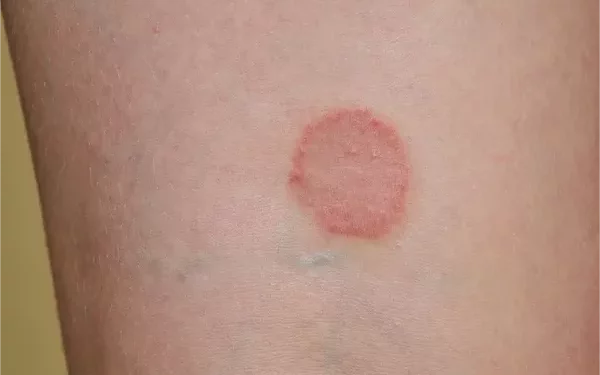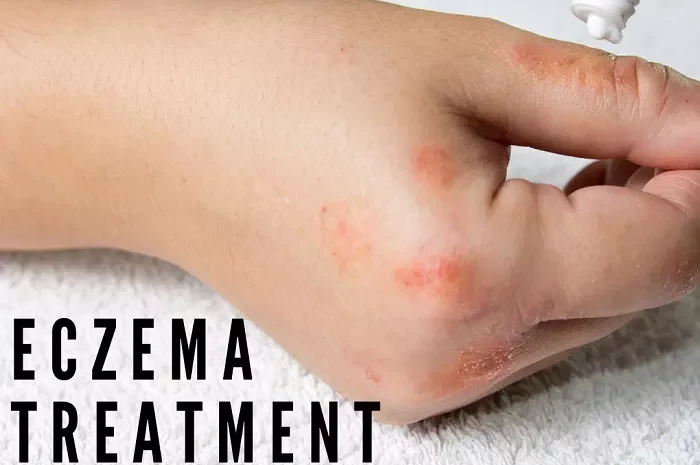Ringworm, despite its name, is not caused by a worm but by a group of fungi called dermatophytes. It affects the skin, scalp, and nails, leading to the development of a red, itchy, circular rash with clearer skin in the middle. The condition, medically known as tinea, can be frustrating and uncomfortable. One common question among those affected is whether ringworm gets bigger before it goes away. This article will explore the progression of ringworm, its symptoms, causes, treatments, and whether it can expand in size before resolving.
Understanding Ringworm
What is Ringworm?
Ringworm is a contagious fungal infection that manifests as a red, circular rash. It can affect various parts of the body, including the scalp (tinea capitis), feet (tinea pedis or athlete’s foot), groin area (tinea cruris or jock itch), and other skin areas (tinea corporis). Despite its name, it has no relation to worms. The fungi responsible for ringworm thrive in warm, moist environments and can be transmitted through direct contact with an infected person, animal, or contaminated surfaces.
Symptoms of Ringworm
The symptoms of ringworm vary depending on the affected area but generally include:
Red, Circular Rash: The hallmark of ringworm is a red, circular rash with a clear or scaly center.
Itching: The infected area is often itchy and uncomfortable.
Scaly or Cracked Skin: The rash may be accompanied by scaling or cracking of the skin.
Blisters: In some cases, blisters may form around the edge of the rash.
Hair Loss: When ringworm affects the scalp, it can lead to hair loss in the infected area.
The Progression of Ringworm
Initial Stages
In the early stages, ringworm starts as a small, red, and itchy spot. This spot gradually grows in size, forming a circular or ring-like shape. The center of the rash may start to clear up, giving it a ring-like appearance. This initial growth phase can last for several days to weeks, depending on the individual’s immune response and the effectiveness of any treatments applied.
Growth Phase
As the infection progresses, the ringworm may continue to expand outward from the initial site of infection. This growth phase is a natural part of the infection process, as the fungi spread to adjacent skin areas. During this phase, the rash may become more pronounced, and the itching and discomfort may increase.
Plateau and Resolution
Eventually, with appropriate treatment, the infection reaches a plateau phase where the growth slows down or stops. The ringworm then begins to heal from the center outward, and the symptoms gradually subside. The healing process can take several weeks, and it’s essential to continue treatment for the recommended duration to ensure complete eradication of the fungi.
Does Ringworm Get Bigger Before It Goes Away?
Factors Influencing Ringworm Expansion
Several factors can influence whether ringworm gets bigger before it goes away:
Immune Response: An individual’s immune system plays a crucial role in controlling the spread of the infection. A weaker immune response may allow the ringworm to grow larger before it is brought under control.
Treatment: Early and effective treatment can limit the spread of the infection. Without treatment, ringworm is likely to expand before it starts to resolve.
Hygiene: Maintaining good hygiene practices can prevent the spread of the infection to other parts of the body or to other individuals.
Natural Course of the Infection
In most cases, ringworm does tend to get bigger before it starts to go away. This is because the fungi responsible for the infection spread outward from the initial site of infection. The immune system eventually recognizes the infection and starts to combat it, leading to the plateau and resolution phases. However, without appropriate treatment, the infection can persist and continue to spread.
Treatment and Management of Ringworm
Over-the-Counter Treatments
For mild cases of ringworm, over-the-counter antifungal creams, ointments, or lotions are often effective. Commonly used antifungal agents include:
- Clotrimazole
- Miconazole
- Terbinafine
- Ketoconazole
These treatments should be applied to the affected area according to the instructions on the package, typically for a period of two to four weeks.
Prescription Medications
In more severe cases or when over-the-counter treatments fail, prescription medications may be necessary. These can include:
Topical Antifungals: Stronger topical treatments may be prescribed by a healthcare provider.
Oral Antifungals: For widespread or resistant infections, oral antifungal medications such as terbinafine, itraconazole, or fluconazole may be prescribed.
SEE ALSO: The Best Tablet for Ringworm Infection
Home Remedies and Preventative Measures
While medical treatments are essential, certain home remedies and preventative measures can help manage and prevent ringworm:
Keep the Skin Clean and Dry: Fungi thrive in moist environments, so keeping the skin clean and dry is crucial.
Avoid Sharing Personal Items: To prevent the spread of infection, avoid sharing towels, clothing, or grooming tools.
Wear Loose-Fitting Clothing: Tight clothing can create a warm, moist environment that promotes fungal growth.
Maintain Good Hygiene: Regular hand washing and showering, especially after sweating, can help prevent ringworm.
Complications and When to See a Doctor
Potential Complications
While ringworm is generally a mild infection, complications can arise if it is not treated properly. These complications can include:
Secondary Bacterial Infections: Scratching the affected area can lead to secondary bacterial infections.
Persistent or Recurrent Infections: Without proper treatment, ringworm can persist or recur.
Spread to Other Body Parts: The infection can spread to other areas of the body or to other individuals.
When to Seek Medical Advice
It’s essential to seek medical advice if:
- The infection does not improve with over-the-counter treatments.
- The infection is widespread or affects multiple areas of the body.
- There are signs of a secondary bacterial infection, such as increased redness, swelling, or pus.
- The affected individual has a weakened immune system or other underlying health conditions.
Conclusion
Ringworm is a common and contagious fungal infection that often gets bigger before it goes away. The initial growth phase is a natural part of the infection process as the fungi spread outward from the initial site of infection. With appropriate treatment and good hygiene practices, the infection can be controlled and eventually resolved. Over-the-counter antifungal treatments are often effective for mild cases, while more severe infections may require prescription medications. It’s essential to seek medical advice if the infection does not improve with initial treatment or if complications arise. By understanding the progression of ringworm and taking proactive measures, individuals can effectively manage and prevent this uncomfortable condition.
Related Topics:



























